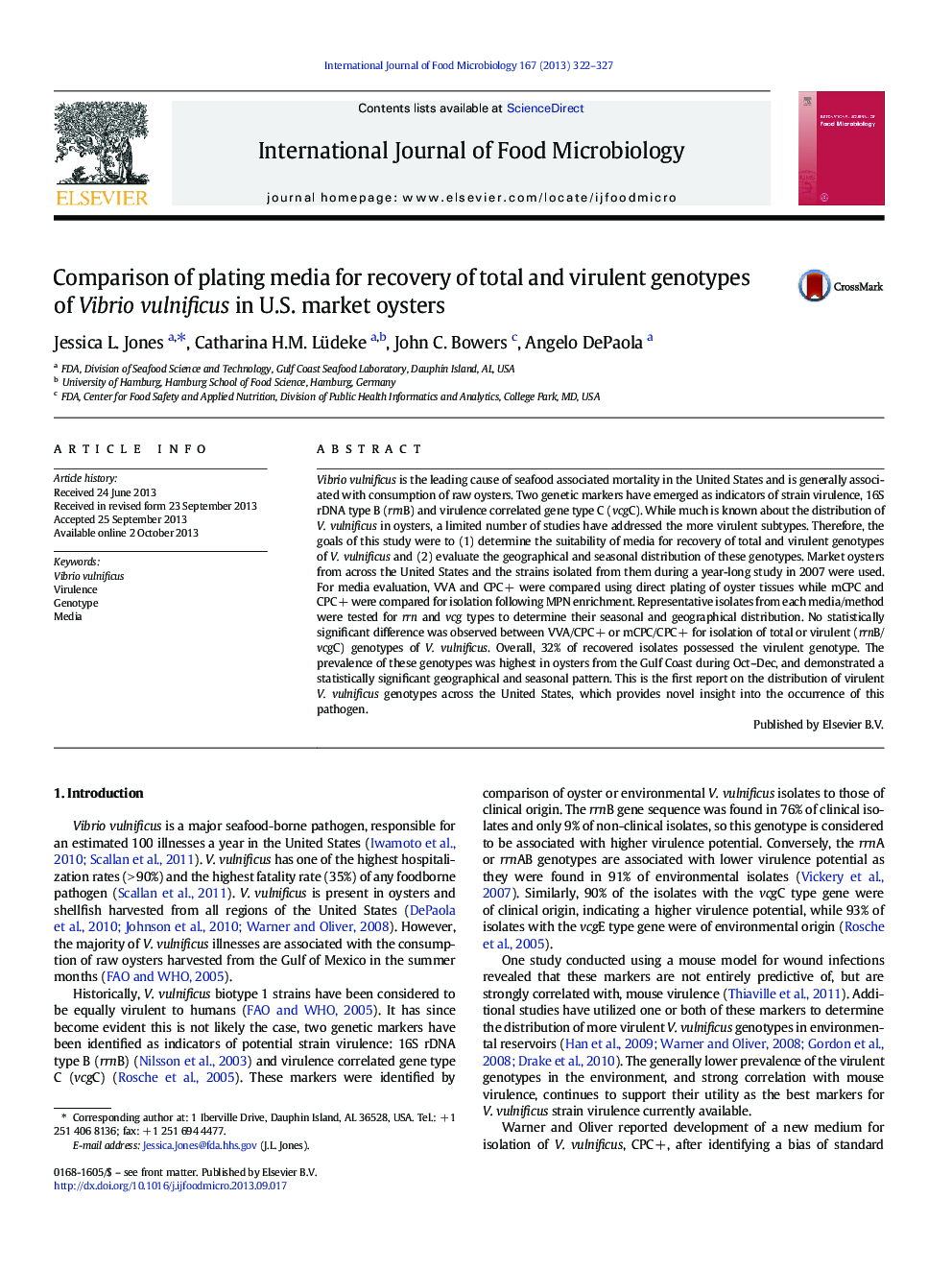| Article ID | Journal | Published Year | Pages | File Type |
|---|---|---|---|---|
| 4367067 | International Journal of Food Microbiology | 2013 | 6 Pages |
•CPC + is equivalent to VVA for direct plating enumeration of Vibrio vulnificus from oysters.•No difference was observed in V. vulnificus levels in oysters obtained by MPN using CPC + or mCPC.•Overall, no difference in recovery of virulent V. vulnificus genotypes between media was noted.•The highest proportion of virulent genotype isolates was seen with Gulf Coast samples.
Vibrio vulnificus is the leading cause of seafood associated mortality in the United States and is generally associated with consumption of raw oysters. Two genetic markers have emerged as indicators of strain virulence, 16S rDNA type B (rrnB) and virulence correlated gene type C (vcgC). While much is known about the distribution of V. vulnificus in oysters, a limited number of studies have addressed the more virulent subtypes. Therefore, the goals of this study were to (1) determine the suitability of media for recovery of total and virulent genotypes of V. vulnificus and (2) evaluate the geographical and seasonal distribution of these genotypes. Market oysters from across the United States and the strains isolated from them during a year-long study in 2007 were used. For media evaluation, VVA and CPC + were compared using direct plating of oyster tissues while mCPC and CPC + were compared for isolation following MPN enrichment. Representative isolates from each media/method were tested for rrn and vcg types to determine their seasonal and geographical distribution. No statistically significant difference was observed between VVA/CPC + or mCPC/CPC + for isolation of total or virulent (rrnB/vcgC) genotypes of V. vulnificus. Overall, 32% of recovered isolates possessed the virulent genotype. The prevalence of these genotypes was highest in oysters from the Gulf Coast during Oct–Dec, and demonstrated a statistically significant geographical and seasonal pattern. This is the first report on the distribution of virulent V. vulnificus genotypes across the United States, which provides novel insight into the occurrence of this pathogen.
